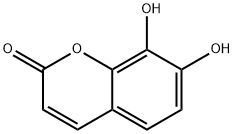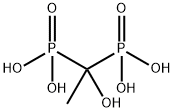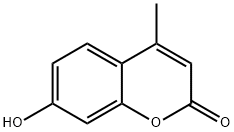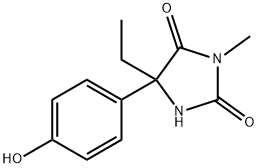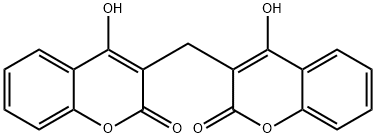Daphnetin , >90.0%(HPLC) , 486-35-1
Synonym(s):
Daphnetin;Daphnetol;Ruixiangsu
CAS NO.:486-35-1
Empirical Formula: C9H6O4
Molecular Weight: 178.14
MDL number: MFCD00016977
EINECS: 207-632-8
| Pack Size | Price | Stock | Quantity |
| 50MG | RMB103.20 | In Stock |
|
| 100MG | RMB143.20 | In Stock |
|
| 250MG | RMB239.20 | In Stock |
|
| 1G | RMB928.00 | In Stock |
|
| 5g | RMB4479.20 | In Stock |
|
| others | Enquire |
PRODUCT Properties
| Melting point: | 265-268°C (dec.) |
| Boiling point: | 270.35°C (rough estimate) |
| Density | 1.3431 (rough estimate) |
| refractive index | 1.4500 (estimate) |
| storage temp. | room temp |
| solubility | soluble in Methanol |
| form | solid |
| pka | 7.61±0.20(Predicted) |
| color | White to Light yellow to Light red |
| biological source | synthetic (organic) |
| Merck | 14,2817 |
| InChI | InChI=1S/C9H6O4/c10-6-3-1-5-2-4-7(11)13-9(5)8(6)12/h1-4,10,12H |
| InChIKey | ATEFPOUAMCWAQS-UHFFFAOYSA-N |
| SMILES | C1(=O)OC2=C(O)C(O)=CC=C2C=C1 |
| LogP | 0.884 (est) |
| CAS DataBase Reference | 486-35-1(CAS DataBase Reference) |
Description and Uses
Daphnetin, mainly extracted from Yu Ruixiang Changbai Daphne (Daphne Korean Nakai), Daphne giraldii Nitsche bark, and root bark, is the main efficacy component of the plants D.tangutica Maxim and D.retttsa Hemsl. Changbai daphnes has the pharmacological effects of warming the spleen and stomach, relaxing the muscles and joints, and promoting circulation. In TCM, it’s commonly used as medicines for treatment of injuries. Because Changbai daphne is a pungent and warm natured herbal medicine, it was used to warm the spleen and stomach by dispelling cold.
Daphnetin is a natural coumarin derivative providing anti-inflammatory and protective properties to those suffering from lung injury.
Safety
| Symbol(GHS) |  GHS07 |
| Signal word | Warning |
| Hazard statements | H315-H319 |
| Precautionary statements | P264-P280-P302+P352+P332+P313+P362+P364-P305+P351+P338+P337+P313 |
| Hazard Codes | Xi |
| Risk Statements | 25-36/37/38-20/21 |
| Safety Statements | 22-24/25-36-26-36/37/39 |
| WGK Germany | 2 |
| RTECS | GN6382600 |
| HS Code | 29322090 |

